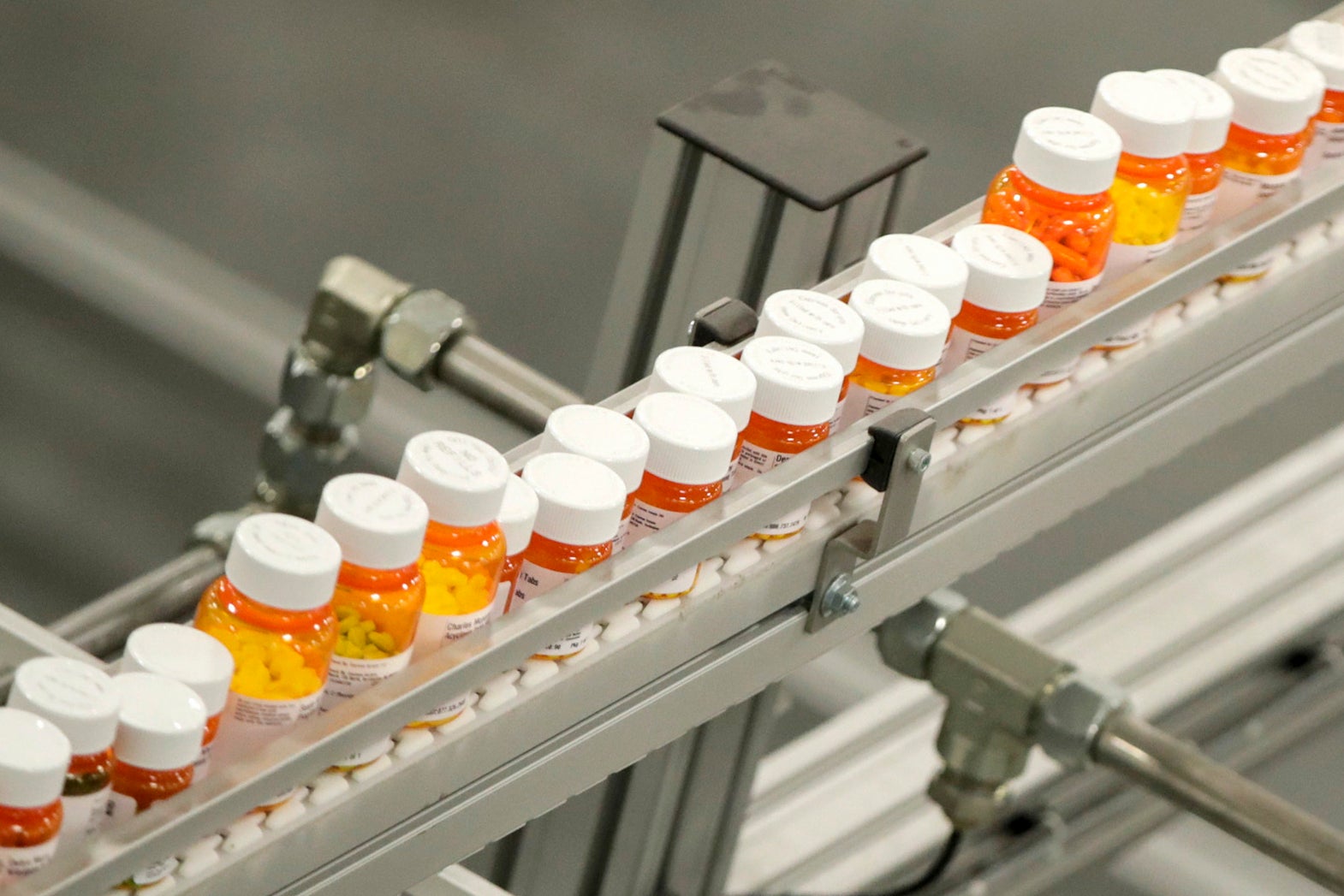Those of us who use eye drops have likely experienced wasted medication running down our cheek. We find out why some manufacturers are intentionally making drops too large and how that cost is passed on to consumers. A guest shares why she thinks the key to raising an empowered girl is letting her be funny. We also look at the latest incidents at the state’s troubled youth prison.
Featured in this Show
-
More Staff Members Allegedly Assaulted At Lincoln Hills Youth Prison
Five staff members at the state’s troubled youth prison were reportedly sent to the hospital over the weekend after two separate incidents of assaults by inmates. A reporter joins the show to talk about the latest incidents at Lincoln Hills, and what changes could be coming to make the facility safer for staff.
-
Eye Drops Are Too Big, And Patients Are Paying For The Waste
If you’ve ever put an eye drop in your eye, you know that it certainly feels like an imperfect process. Even when you get the drop square in your eye, there’s often “overflow,” leading to excess medication dripping down your cheek. It turns out that some eye drop manufacturers design their products that way on purpose. A reporter looks at why eye drops are made to be too big, and how that waste is passed along to consumers and patients who rely on these drugs.
-
Do You Spill Eye Drops While Putting Them In? It May Not Be Your Fault
Putting in eye drops can be a struggle. Even if the bottle seems to be lined up perfectly, that Visine or a much-needed glaucoma medication can drip down your cheek. But that spillover doesn’t necessarily mean you missed your eye.
As ProPublica reporter Marshall Allen recently reported, drug companies make eye drops too big by design and one of the side effects of this excess is the cost.
“A cheap bottle of Visine, obviously, that’s almost something you feel like you could throw away without losing a lot of money, but a lot of these drugs can cost hundreds of dollars a bottle, especially for something like glaucoma medications and people who take medication for chronic dry eyes,” Allen said. “If those drops are being made larger than they need to be, that’s causing patients to run out of their bottles too soon and have to replace their bottles too soon.”
In other cases, Allen added, it’s possible a patient’s insurance might not let them get a replacement soon enough, and a person might go days without medication.
“It’s amazing how little this has been studied,” Allen said.
The size of these drops varies. It’s estimated the eye can hold, at most, an additional 23 micro liters of fluid, Allen said. The typical drop could range anywhere from 20 to 70 micro liters.
“Most drops contain more liquid than your eye can contain and some of them are two or three times bigger than what your eye can contain, and so really it’s the effect of like, pouring water into a glass that’s already full,” Allen said. “It just overflows and there’s no therapeutic effect.”
The cost of the waste isn’t the only side effect. It can also get physical.
Take the sensation known as “tasting your eye drops.” That’s when excess eye medication gets ingested through the ducts of your eye, and goes into the sinuses and into the body.
“That can actually be dangerous for some of these really potent medications,” Allen said.
While there was research conducted in the early ’90s that led to the creation of a micro drop — only 16 micro liters — it didn’t get brought to market.
“It raised so many questions about what it would do,” Allen said. “You know, they also had to think through, well, are we going to now change all of our products to micro drops? Are we going to change the prices? Because if we don’t change the price and keep the price the same, then our competitors are going to accuse us of charging more for our eye drops.”
“It’s a real cutthroat industry, and they just had to think through all these variables and in the end, they just decided not to risk it,” Allen continued.
Currently, Allen said, there is no micro drop available in the United States, but there are different companies trying to do it and different countries in Europe that make it available.
There isn’t necessarily a federal regulatory agency like the U.S. Food and Drug Administration that is doing something about this, Allen said.
“The FDA’s mission is to really look at the safety and the effectiveness of drugs,” he noted. “They’re not looking at whether or not drugs could be delivered in a way that’s less wasteful or less expensive.”
Allen’s report on wasteful eye drops is one of several in ProPublica’s series “Wasted Medicine” looking at the billions of dollars wasted by health care providers in the U.S. and how it drives up the cost of care.
Allen said he’s trying to drive home that wasted medical spending affects people’s pocketbooks.
“These are our taxpayer dollars for Medicare plans, for Medicaid plans,” Allen said. “This is our money collectively that’s being wasted, and it’s being wasted to the tune of hundreds of billions of dollars a year when you add it all up.”
-
Humor As Empowerment For Young Girls
There’s an increasing focus on ways to help young girls feel empowered to chart their own path, and our guest says that one of the best ways to do that is to let them be funny! She joins us to talk about the value of humor to girls and how parents can help cultivate it.
Episode Credits
- Rob Ferrett Host
- J. Carlisle Larsen Host
- Veronica Rueckert Host
- Chris Malina Producer
- J. Carlisle Larsen Producer
- Patrick Marley Guest
- Marshall Allen Guest
- Ellen McCarthy Guest
Wisconsin Public Radio, © Copyright 2026, Board of Regents of the University of Wisconsin System and Wisconsin Educational Communications Board.


